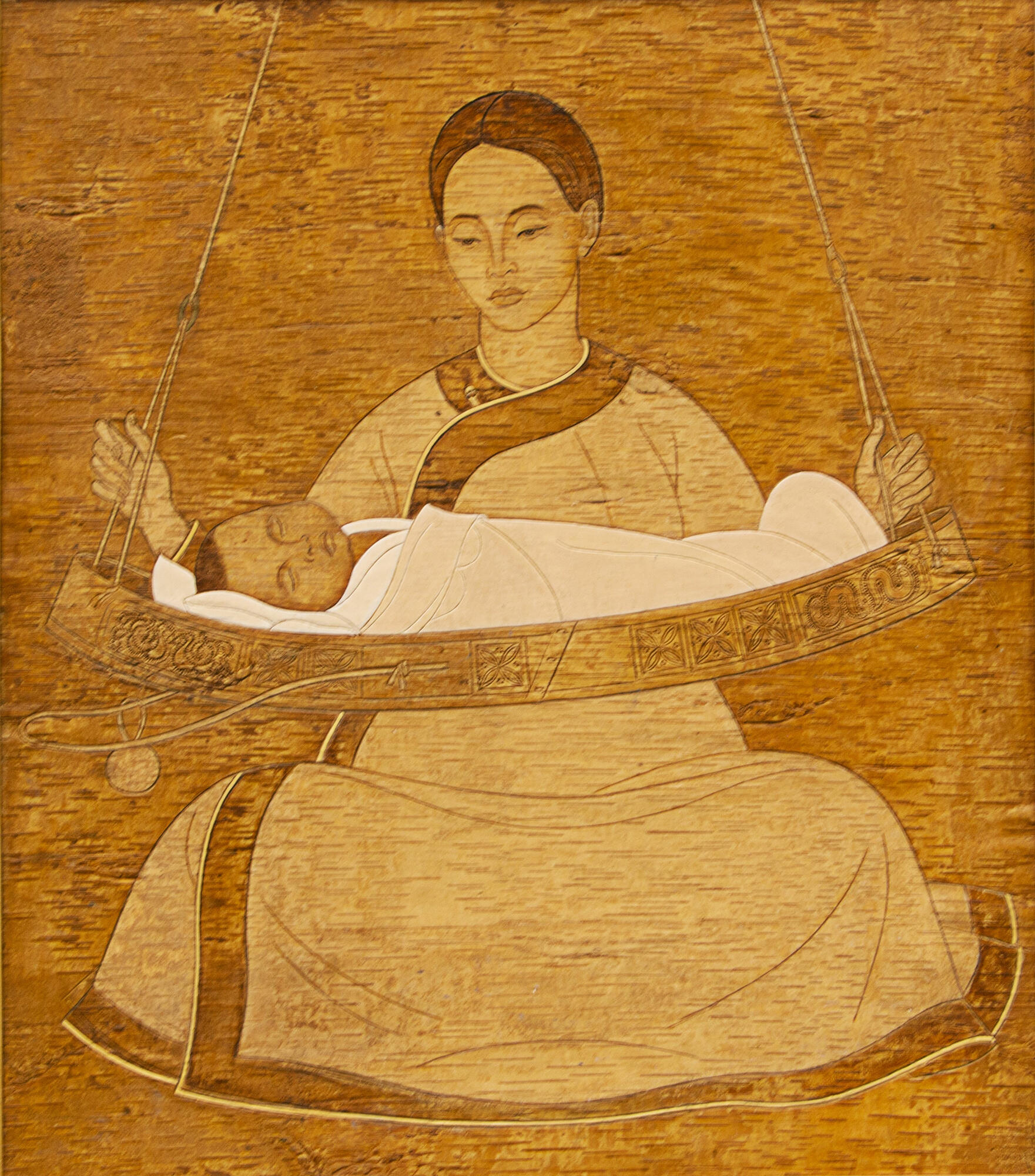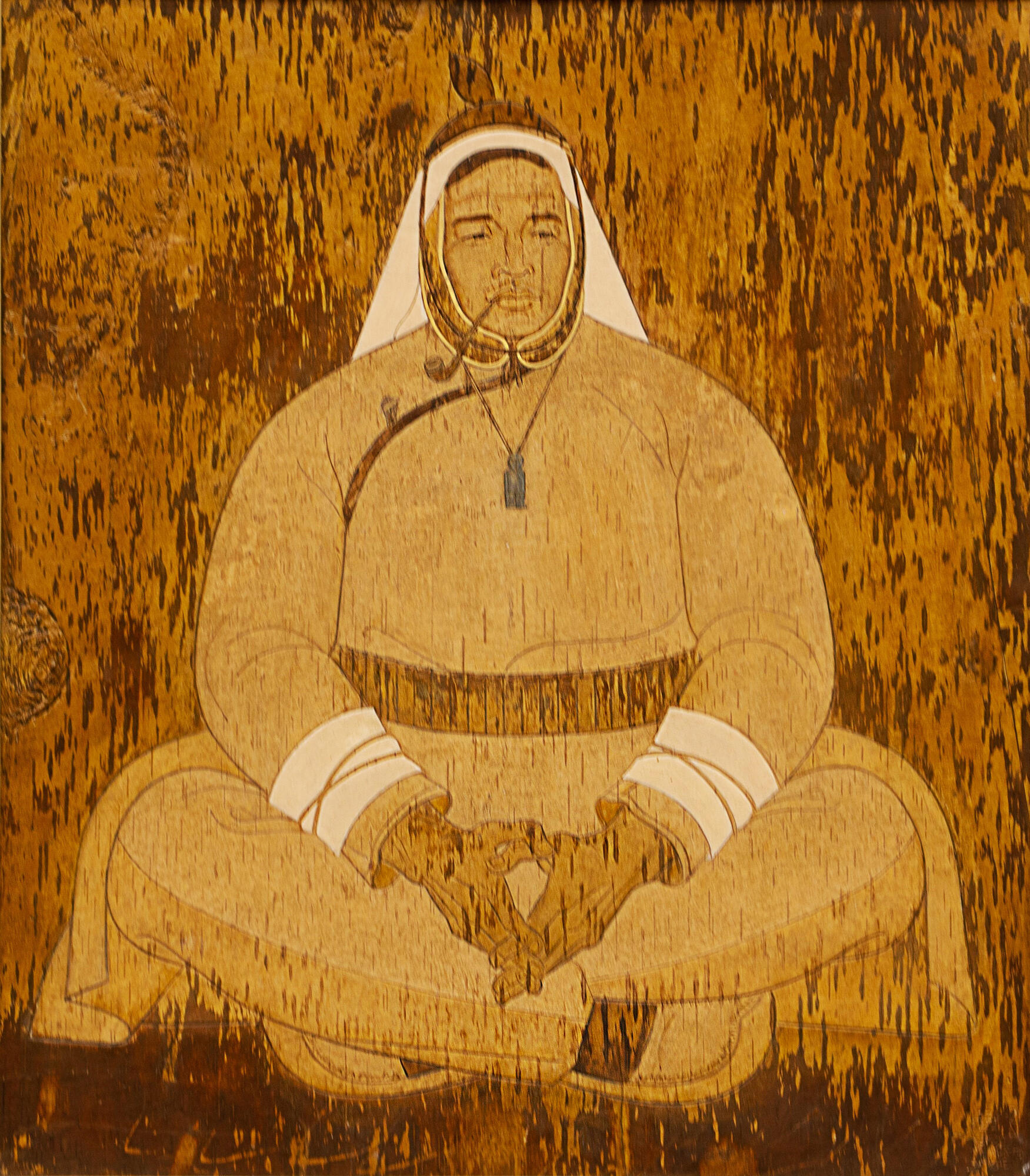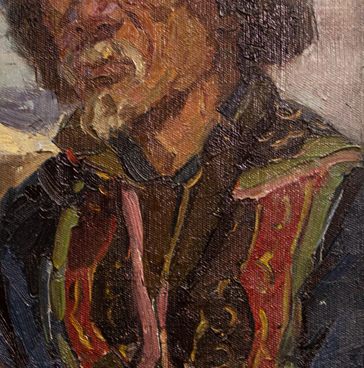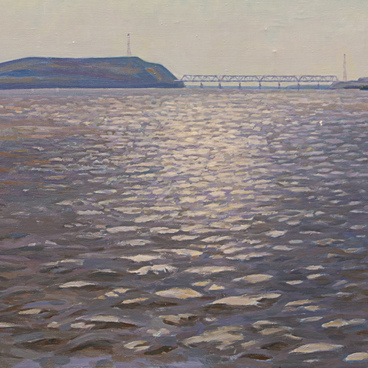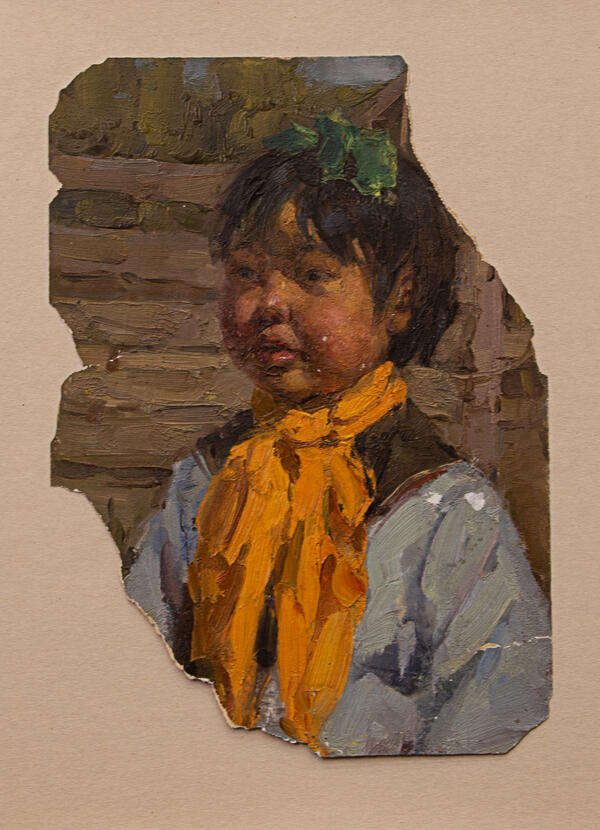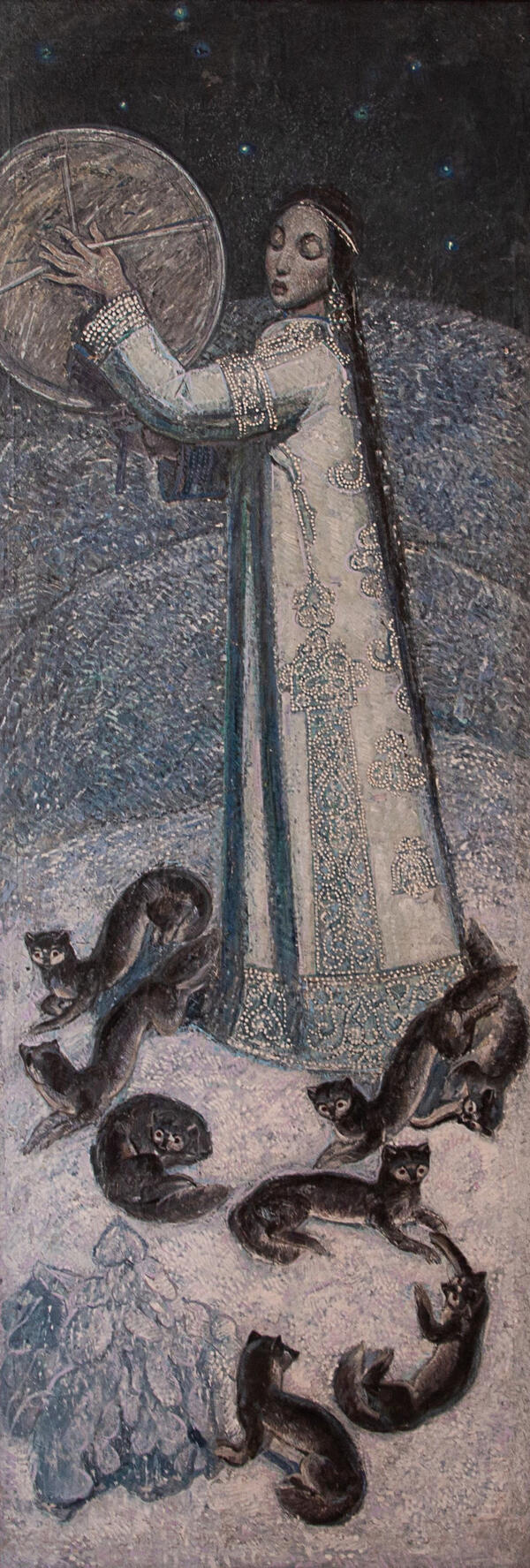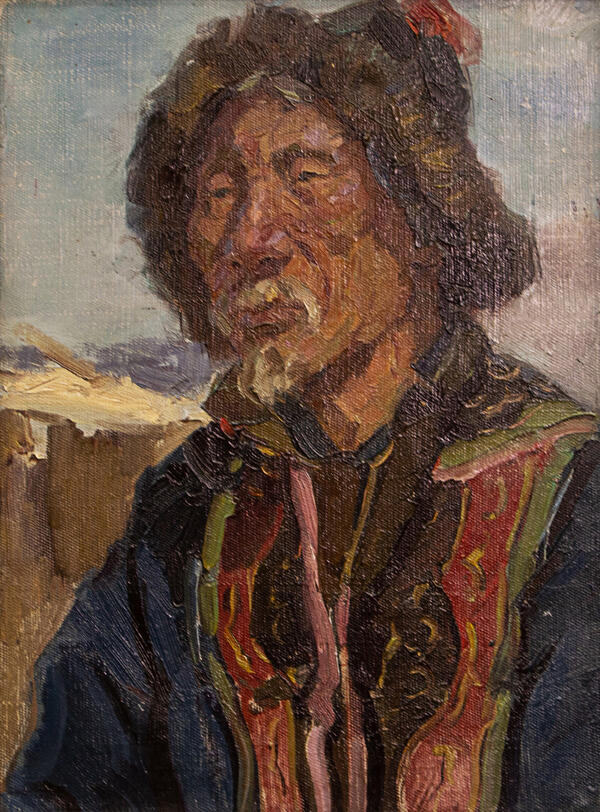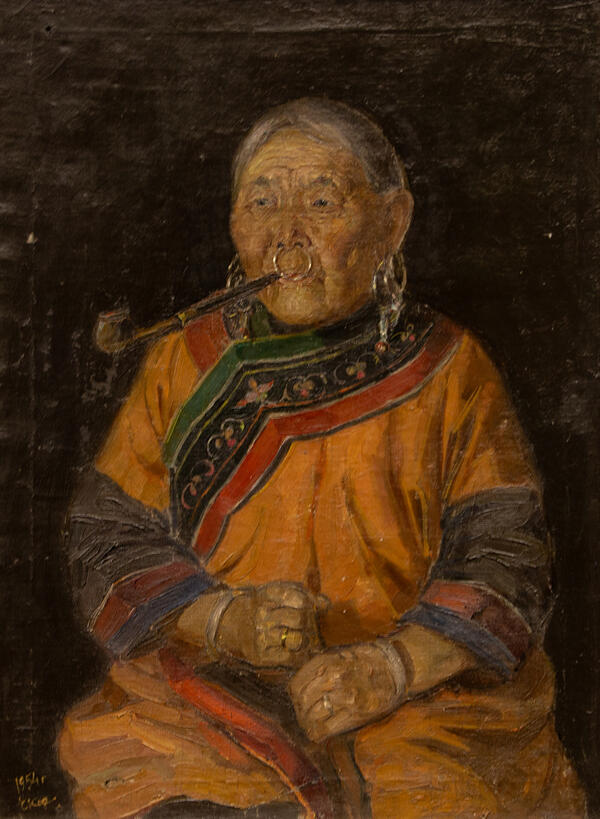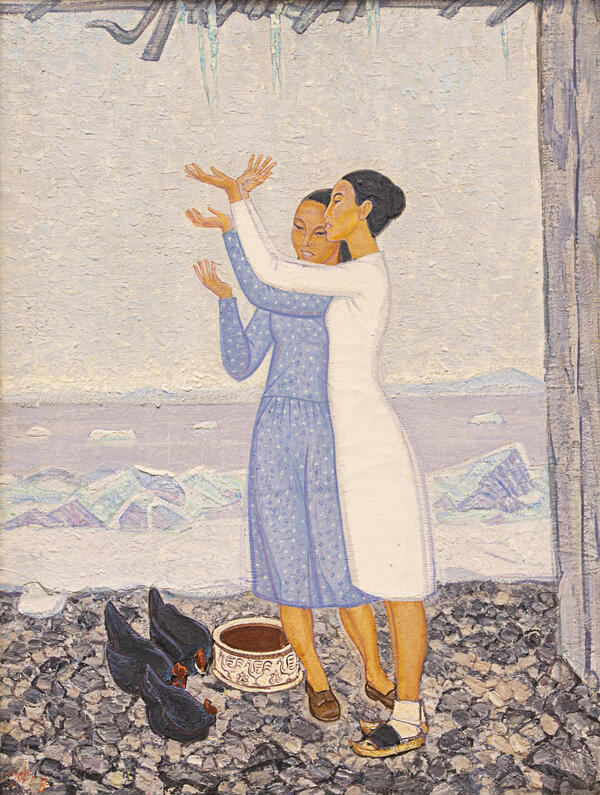Korolenko’s Nanai cycle of paintings includes a gallery of ethnographically and psychologically accurate, vivid images, ancient legends brought to life on canvas, and the beginnings of philosophical reflections. It is also the artist’s search for new forms of expression.
Early Korolenko’s works were painted in a classical manner and followed traditions of realism. Soon, however, the artist began experimenting in order to capture the unique beautiful nature of the Russian Far East. The effect of sunlight, color contrasts, dynamism, and a combination of impasto brushstrokes and liquid oil paints helped him to create expressive, relief paintings. Still, the artist would later use other materials apart from paints.
The diptych “Hunter’s Family” was created using the traditional Nanai technique, which Yevgeny Korolenko adopted from Nanai artisans. He used a natural material, the so-called stained birchbark, which is the upper layer of birchbark that has long been used in the national art of the Amur region. Artists embossed patterns on the inner part of such grayish-white or pinkish-brown birchbark sheets and then painted over them.
For this type of work, artists made their own paints using a special authentic recipe, which required organic materials: hackberry, chalk, and egg white. The drawing itself was applied with a special knife. The goal was to preserve and emphasize the beauty of the birchbark base, using a natural pattern to convey their ideas more profoundly.
The left part of the diptych — “Hunter” — is painted against the background of a vertical birchbark pattern. It symbolizes the robust male counterpart, the strong-willed, determined personality of a man-hunter and his perseverance in moving forward. In contrast, the right part — “Motherhood” — is full of inner peace and conveys the beauty and innocence of the images of a mother and her infant child. The horizontal birchbark pattern in the background enhances the feeling of tranquility, love, and stability.
Despite the use of a technique new to him, Yevgeny Korolenko still managed to masterfully outline the details: the faces of his characters and the folds on their clothes. Upon closer look, the protecting ornament on the cradle, suspended from the dwelling’s ceiling, becomes discernible.
Early Korolenko’s works were painted in a classical manner and followed traditions of realism. Soon, however, the artist began experimenting in order to capture the unique beautiful nature of the Russian Far East. The effect of sunlight, color contrasts, dynamism, and a combination of impasto brushstrokes and liquid oil paints helped him to create expressive, relief paintings. Still, the artist would later use other materials apart from paints.
The diptych “Hunter’s Family” was created using the traditional Nanai technique, which Yevgeny Korolenko adopted from Nanai artisans. He used a natural material, the so-called stained birchbark, which is the upper layer of birchbark that has long been used in the national art of the Amur region. Artists embossed patterns on the inner part of such grayish-white or pinkish-brown birchbark sheets and then painted over them.
For this type of work, artists made their own paints using a special authentic recipe, which required organic materials: hackberry, chalk, and egg white. The drawing itself was applied with a special knife. The goal was to preserve and emphasize the beauty of the birchbark base, using a natural pattern to convey their ideas more profoundly.
The left part of the diptych — “Hunter” — is painted against the background of a vertical birchbark pattern. It symbolizes the robust male counterpart, the strong-willed, determined personality of a man-hunter and his perseverance in moving forward. In contrast, the right part — “Motherhood” — is full of inner peace and conveys the beauty and innocence of the images of a mother and her infant child. The horizontal birchbark pattern in the background enhances the feeling of tranquility, love, and stability.
Despite the use of a technique new to him, Yevgeny Korolenko still managed to masterfully outline the details: the faces of his characters and the folds on their clothes. Upon closer look, the protecting ornament on the cradle, suspended from the dwelling’s ceiling, becomes discernible.

